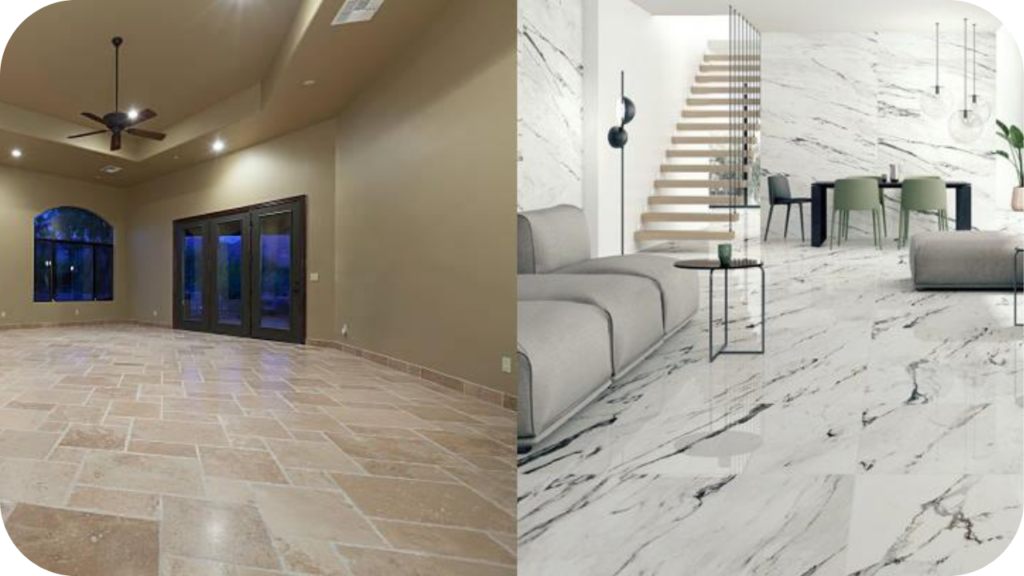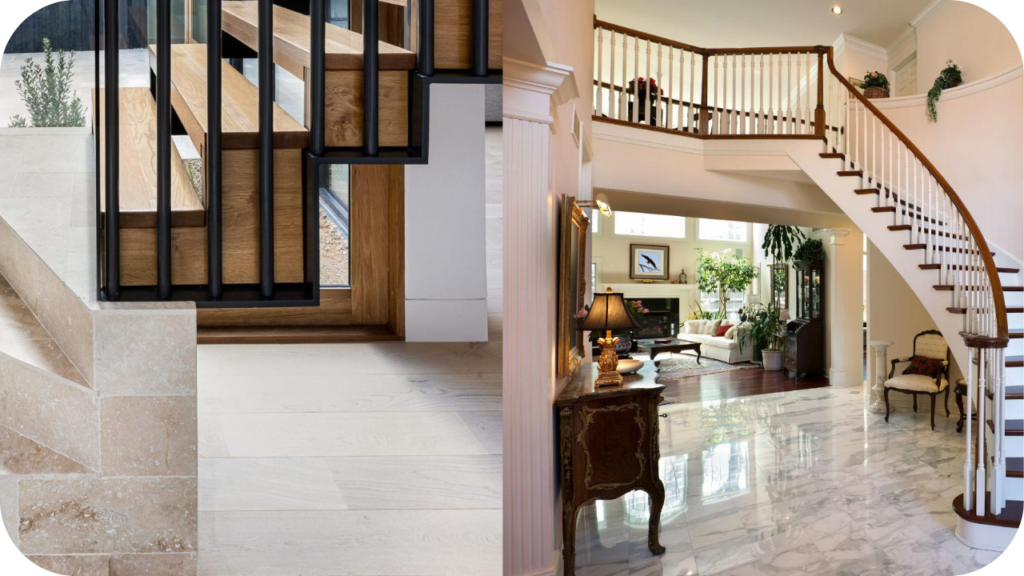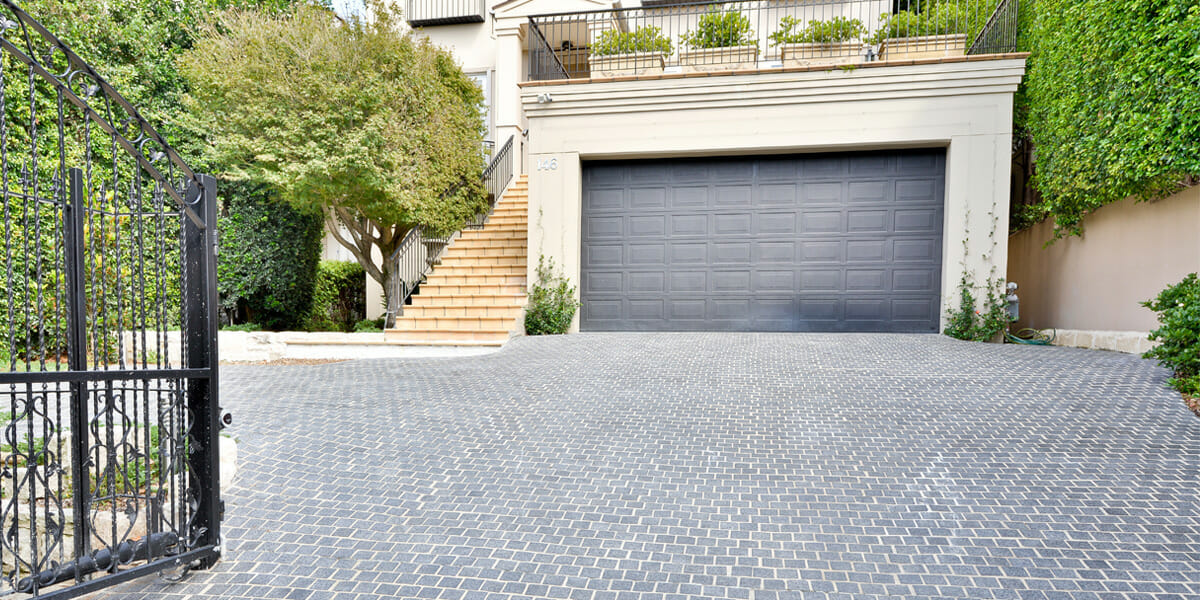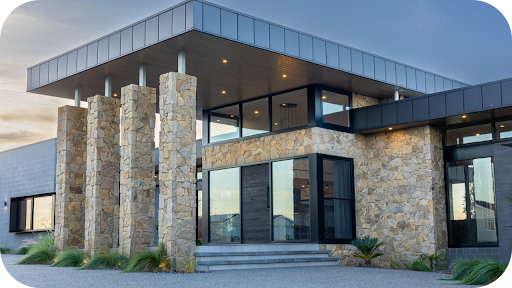
Homeowners in Melbourne are increasingly turning to natural stone to bring elegance and durability into their living spaces. From patios and courtyards to kitchens and bathrooms, stone remains a hallmark of luxury design.
Among the many choices, travertine and marble stand out as two of the most popular options. Each carries its own qualities, textures, and strengths that suit different lifestyles and design visions.
This guide explains the key differences between travertine and marble, covering their benefits, uses, pros and cons, and tips for choosing the right stone.
What is Travertine?
Travertine is a natural stone formed from limestone deposits created by mineral-rich waters. Its porous surface, with subtle holes and textures, gives it a distinctive look that feels organic and timeless.
Favoured for its warm, earthy palette, travertine comes in shades such as Ivory Travertine, Silver Travertine, Classic Travertine, and Cashmere Travertine. Each variety offers different tones and patterns, allowing it to suit both modern and traditional outdoor designs.
In Melbourne, travertine is often chosen for pool surrounds, patios, courtyards, and bathrooms, as it remains comfortable underfoot, handles moisture well, and maintains an elegant, enduring finish across everyday use.
What is Marble?
Marble is a metamorphic stone formed when limestone undergoes intense heat and pressure, creating a dense structure with smooth surfaces and distinctive veining. This natural process gives marble its luxurious reputation and enduring appeal.
Highly regarded for its refined look, marble comes in varieties such as Luna Grey Marble, Glacier Marble, Atmos Marble, and Provincial Marble. These options range from soft greys to striking patterns, each offering a unique way to elevate interiors or outdoor features.
In Melbourne homes, marble is widely used for kitchens, bathrooms, flooring, feature walls, and high-end alfresco areas where timeless elegance is a priority.
Travertine vs. Marble: Key Differences

Both travertine and marble bring beauty and strength to Melbourne homes, but their qualities differ. Here’s how they compare across appearance, durability, maintenance, cost, and climate suitability.
1. Appearance
Travertine presents a rustic, natural look with earthy tones and soft textures. Its subtle patterns create warmth and charm, making it ideal for outdoor areas or interiors with a relaxed, inviting style.
Marble offers a polished, refined finish with striking veining that exudes a bold, luxurious feel. Each slab is unique, delivering a statement appeal that works beautifully in kitchens, bathrooms, and high-end living spaces.
2. Durability
Travertine is strong and reliable, especially outdoors, but its porous surface requires sealing to maintain integrity. When properly maintained, it handles Melbourne’s variable climate well and continues to perform in high-use areas.
Marble is denser and naturally robust, making it suitable for busy interiors. With regular sealing, it withstands daily wear while retaining elegance, making it a dependable option for flooring and feature walls.
3. Maintenance
Travertine needs more frequent sealing and ongoing care to protect against moisture and staining. Routine maintenance preserves its natural look and ensures longevity across patios, courtyards, and bathrooms.
Marble requires less frequent sealing and is easier to keep clean with proper care. However, it is sensitive to acids, so spills must be managed quickly to prevent marks on polished surfaces.
4. Cost
Travertine is generally more cost-effective, offering affordable luxury that suits a wide range of projects. Its balance of beauty and value makes it a popular choice for Melbourne homeowners.
Marble commands a premium price due to its elegance and rarity. It’s considered an investment stone, chosen when the goal is to create sophisticated interiors with long-term impact.
5. Climate Suitability in Melbourne
Travertine performs exceptionally in outdoor settings, staying cool underfoot during summer and coping well with weather shifts. Its natural texture makes it a practical choice for pools, courtyards, and landscaped areas.
Marble is best suited to interiors in Melbourne, where its polished finish and veining can be protected from harsh outdoor conditions. In select outdoor uses, it requires extra care and sealing.
Which Stone Suits Different Parts of the Home?

The choice between travertine and marble often depends on where the stone will be used. Here’s how each performs across outdoor, indoor, commercial, and feature applications in Melbourne homes and projects.
1. Outdoor Applications
Travertine excels in outdoor areas such as patios, courtyards, and pool surrounds. Its earthy tones and natural cooling qualities create inviting spaces that remain comfortable and stylish in Melbourne’s shifting climate.
Marble is less common outdoors but can elevate high-end alfresco areas and garden features. With careful sealing and maintenance, it provides a luxurious finish that turns selected exterior spaces into statement settings.
2. Indoor Applications
Travertine suits bathrooms, hallways, and everyday flooring where its warm, natural textures add a relaxed atmosphere. It blends durability with elegance, making interiors feel both grounded and stylish without overpowering the design.
Marble is ideal for kitchens, bathrooms, and feature walls, where its polished surfaces and distinctive veining create visual impact. It brings timeless sophistication and works best indoors, elevating modern and traditional spaces alike.
3. Feature Spaces
Travertine highlights outdoor fire pits, garden steps, and statement courtyards where texture and warmth are valued. Its natural beauty adapts seamlessly, making these areas feel both welcoming and enduring.
Marble defines high-impact features such as grand staircases, reception counters, or alfresco dining spaces. Its striking veining and polished finish create focal points that combine elegance with an unmistakable sense of prestige.
4. Commercial Applications
Travertine performs well in commercial courtyards, cafés, and boutique venues that favour rustic charm. Its authenticity and practicality make it a flexible option for businesses seeking stylish yet approachable spaces.
Marble dominates premium commercial projects such as hotels, retail stores, and office foyers. Its luxury presence strengthens branding and guest experiences, making it the preferred choice for businesses aiming to impress.
Pros and Cons at a Glance
Travertine and marble bring distinct strengths and considerations. This table outlines their key advantages and drawbacks for Melbourne homes.
| Travertine | Marble | |
|---|---|---|
| Pros | • Affordable luxury with rustic charm for indoor and outdoor spaces. • Naturally cool underfoot, perfect for courtyards, patios, and pool surrounds. • Available in finishes like tumbled, honed, and filled. • Popular shades include Ivory, Silver, Classic, and Cashmere Travertine. • Blends seamlessly with gardens and relaxed outdoor settings. | • Timeless elegance with bold veining for kitchens, bathrooms, and feature walls. • Dense and durable, ideal for flooring and high-use interiors. • Offered in premium varieties like Luna Grey, Glacier, Atmos, and Provincial Marble. • Polished and honed finishes suit both modern and classic homes. • Adds long-term value and prestige to Melbourne properties. |
| Cons | • Porous surface requiring regular sealing for durability. • Can stain if spills are not cleaned quickly. • Less dense, limiting suitability for heavy-duty applications. | • Higher upfront cost compared to other natural stones. • Sensitive to acidic substances like wine or citrus. • Needs sealing and attentive care in busy areas. |
How to Choose Between Travertine and Marble

Selecting the right stone comes down to lifestyle, budget, and design goals. Use these points to guide your decision for Melbourne homes.
- Match stone to lifestyle: Travertine works best for relaxed outdoor living, offering natural textures and comfort underfoot. Marble suits elegant interiors where sophistication, refinement, and long-lasting appeal are the priorities in everyday use.
- Consider maintenance commitment: Travertine requires regular sealing, cleaning, and attentive care to protect its porous surface. Marble also needs sealing but demands vigilance against acidic spills, making upkeep slightly different depending on usage patterns.
- Align with design vision: Travertine delivers rustic charm with earthy tones and natural textures, enhancing outdoor landscapes and casual interiors. Marble offers polished luxury with bold veining, creating striking statement pieces and refined home finishes.
- Balance budget and value: Travertine is more affordable, providing accessible luxury without compromising quality. Marble carries a premium cost but enhances property prestige, often becoming a long-term investment for resale and design impact.
- Assess climate performance: Travertine excels outdoors in Melbourne’s varied weather, staying cool and comfortable in summer. Marble performs best indoors, where its elegant finish avoids exposure to moisture, ensuring durability and sustained beauty.
Which Stone is Best for Your Melbourne Home?
Both travertine and marble offer qualities that can transform Melbourne homes into stylish, functional spaces. Travertine shines in relaxed outdoor areas with its natural textures and cooling comfort, while marble brings elegance indoors through polished finishes and striking veining.
The right choice ultimately depends on lifestyle, design goals, and budget. Travertine is an affordable, versatile material that is ideal for courtyards, pools, and bathrooms. Marble, though premium in cost, adds enduring sophistication to kitchens, bathrooms, and feature walls, enhancing both liveability and property value.
At Splendour in Stone, we provide premium travertine and marble in a wide range of finishes and colours, tailored to Melbourne’s climate and design preferences. Contact our team today to request a sample or expert guidance, and find the stone that perfectly complements your home.
More To Explore

Grey Granite Cobblestones for Driveways: Strength and Style
Grey granite cobblestones combine strength, safety, and timeless appeal, making them a popular choice for Melbourne driveways and outdoor spaces. Their natural flamed texture offers

Granite Wall Cladding Melbourne: Modern and Classic Appeal
Granite wall cladding brings both modern sophistication and classic charm to Melbourne architecture. Known for its durability and natural beauty, granite transforms façades, feature walls,


